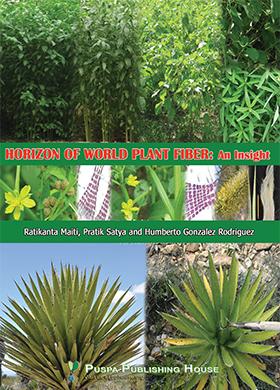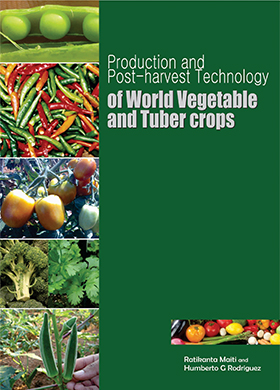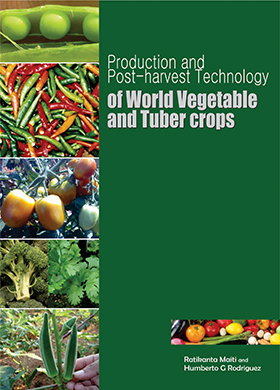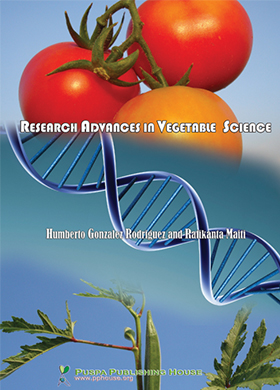Scientific Correspondence
Crop Residue Management in Cotton
A. V. Ramanjaneyulu, B. Ramprasad, N. Sainath, E. Umarani, Ch. Pallavi, J. Vijay and R. Jagadeeshwar
- Page No: 001 - 008
- Published online: 04 Mar 2021
-
Abstract
avr_agron@rediffmail.com
Cotton is the most important commercial crop across rainfed growing regions in India. It produces kapas which has wide variety of uses in industry. Besides, it leaves lot of residues which include stalks, locules, leaves and roots in the field after picking kapas. A huge quantity of residue is being generated across different cotton growing states in India and a large portion of it is being burnt on-farm primarily to clear the field for sowing succeeding crops and for clean cultivation. But, it is leading to environmental pollution and emission of green houses gases. Further, valuable plant material is being lost which otherwise can be used for productive purposes. Many researchers found that insitu incorporation of crop residue would enrich soil fertility, enhances crop productivity and conserves the environment. This paper discussed various machinery with main emphasis on multi crop shredder and also different options for managing the cotton residues effectively.
Keywords : Cotton residue, burning, pollution, management, multicrop shedder
-
Introduction
Cotton is one of the world’s most important fibers and cash crops. It is the most widely used natural fiber in the world. Nearly 250 million people including smallholder farmers and their families across the world are depending on the cotton crop and its by products for their livelihood. In India, it provides direct livelihood to 6.0 million farmers and indirectly to 40-50 million people in the cotton trade and processing. India ranks first in the world in area under cotton cultivation (12.77 million ha). It is also the largest cotton producer in the world with 28.50 million bales followed by China (27.25 million bales), United States (20.02 million bales), Brazil (12.00 million bales) and Pakistan (8.00 million bales) (www.agricoop.nic.in). It is grown across northern, central, southern and also eastern zone states in India. It is predominantly cultivated in the states of Maharashtra, Gujarath and Telangana accounting for 60.3% of the country’s cotton production. In Telangana state, it was cultivated in an area of 2.12 million ha during 2019-20 and it stood third in the country with a production of 55.61 million tonnes (www.agri.telangana.gov.in).
-
Economic Importance of Cotton
All parts of the cotton plant are highly useful as furnished below (Figure 1)
Ø It provides the basic raw material i.e. fibre or lint for making cotton cloth in the textile industry
Ø The short fiber on seed called ‘fuzz’ provides cellulose for making plastics, explosives and other products. It is also used in high quality paper products and processed for padding mattresses, furniture and automobile cushions
Ø Cotton seed is also used as a high protein concentrate in baked goods and other food products. It is used in the vanaspati industry and can also be used as fodder for milch cattle for better milk production
Ø The cotton seed is crushed to obtain oil, meal and hulls. Seed contains 15-20% oil, 20% protein and 3.5% starch.
Ø Cotton seed oil is used for shortening, cooking and salad dressing.
Ø Fine quality cotton seed oil can be used in cosmetics especially in moisturizing lotions and bath soaps
Ø Decorticated cotton seed meal (cake) contains 41% crude protein and 78% total digestible nutrients (TDN). It contains 0.15-0.25% calcium, 0.95-1.71% phosphorus, essential amino acids like lysine (1.76-2.13%) and threonine (1.24-1.58%) (Thirumalaisamy et al., 2016). It is rich in nutrients with 6.6% nitrogen, 2-3% phosphrous and 1-2% potash. Its addition to the soil reduces the pH of soil thus reclaims saline soil to some extent. Further, it is a slow nitrogen release organic manure. It is a good source of food for soil bacteria, earth worms, etc. It can be used for enriching Agricultural soils, as feed for cattle, poultry birds and fishes
Ø The stalks and leaves are incorporated into the soil to enrich the soil fertility.
Ø Studies revealed that incorporation ofstubbles enhanced crop yields of subsequent crop by 10% more on an average.
-
Cotton Residues and their Management
3.1. Cotton residues Of the total crop residue of 683 MT generated in India, only 178 MT of surplus crop residues are available and 12.7% of total residue or 48.9% of surplus residue being burnt across the country. In India and Telangana, cotton crop generates nearly 25-30 MT and 4.0-5.0 MT of stalks, respectively with an average stalk production of 2-3 t ha-1. Cotton crop produces residue like stalks, locules of bolls, leaves and roots. The roots are generally left underground which will be incorporated into the soil during various tillage operations. On the other hand, after completion of picking of kapas, farmers generally follow various options as detailed below for managing cotton stalks (also known as sticks/straw/wood) and bolls in view of labour shortage and ever increasing labour wages thus cost of production.
Ø Farmers leave the small ruminants like goats and sheeps to feed on the leftover bolls and leaves on the crop which will effectively destroy the overwintering larvae and pupae of pink bollworm (Pectinophora gossypiella)
ØTraditionally, farmers are cutting/plucking the stalks with axe, heaping at different places in the field and burning upon complete drying in the sun
ØIn the recent days, farmers passing once or twice cultivator or rotavator or mechanized stalk choppers to bring and heap all the stalks at one or few places in the field and then burning after complete drying
Ø Cut the stalks, transport them to home and use them as firewood by households as a substitute for regular firewood in the villages in view of good calorific value (3827 cal g-1) (Umesh et al., 2015).
Ø Lion’s share of cotton stalks are being burnt except 15% as fuel. Cotton stands third (9.8) in terms of air pollution emission intensity (PM2.5) next to sugarcane (12.0), maize (11.2) followed by rice (9.3) and wheat (8.5) (TERI, 2019).
Ø Cotton stalks can also be converted into briquettes for fire in some countries
3.2. Reasons for burning
Farmers perceive that
Ø It is easy for them to burn the cotton stalks to quickly prepare the land for sowing of succeeding crop
Ø Short time lag between existing crop harvest and sowing of next season crop(s). Thus, farmers do not find time to manage the cotton stalks
Ø Cotton stalks are resistant to microbial attack due to it’s wider C/N ratio and high lignocellulose content, hence, decomposition takes 4-6 months time
3.3. Problems with stalk burning
Ø Burning any crop residue in general and cotton in stalks in particular is laborious, time consuming and costly (Rs.4375 ha-1for cotton). It also leads to environmental pollution.
Ø Burning emits a large number of hazardous pollutants (Krishna et al., 2011).
Ø Burning leads to emissions of greenhouse gases like CO2, NOx, SOx, NH3and volatile organic compounds (VOCs). It affects air quality and visibility in the urban areas because of already existing pollutants due to vehicular and industrial pollution. Finally, it leads to global warming and climate change (IARI, 2012).
Ø Heat genenrated due to burning kills soil micro-organisms and eco-friendly insects too.Cotton stalks contain about 67.3-70% holocellulose, 24.3-28.2% lignin and 5.9-8.3% ash. They are rich in nutrients with 51.0% C, 4.9% H, 0.62-1.0% N, 0.61-0.68% K, 0.08-0.1% P, 0.43% Ca, 0.15% S and 0.12% Mg, 324 ppm Fe, 147 ppm Mn, 27 ppm Zn, 9 ppm Cu and 1.6 ppm Mo (Dubey et al., 2004; Sutaria et al., 2016). So, burning leads to loss of valuable soil organic matter and nutrients.
3.4. Machinery available for eco-friendly management of cotton stubbles
Instead of manual removal of cotton stalks followed by burning, the wide ranging machinery available can be used for removal or chopping and incorporation, as detailed below (Table 1).
3.4.1. Multi crop shredder and its demonstration
The multi-crop shredder is a tractor operated agricultural equipment for cutting into small pieces and shredding the same in the field. It is suitable for row crops such as cotton, castor, maize, chilli and other similar crops. Machine can be operated by any ≥45 HP capacity tractor with dual-clutch, attached to 3 point linkage and powered by PTO with 540/1000 rpm through driveshaft.
Shaktiman multi crop shredder consists of a feeding and shredding system. First, the feeding system has two feeder drums with disc cutters for cutting stalks and two pressure roller drums, one with spring-loaded swing type, designed for optimum and uniform feeding of material to shredding unit. Second, the shredding system has a flywheel with six blades in the shredding system rotates @ 1600 rpm for more productive chopping. Paddles fitted on the periphery of the flywheel give added lift to chopped crop and so as to spread evenly on the field or for collection into a trolley. Heavy-duty flywheel bearings protected by special seals and lubricants keep out moisture, dirt and debris.
It can cover one acre cotton field in 11/2 to 2 hours time at the expense of 4 to 5litres of diesel. The shredder has multiple uses. Besides chopping cotton stalks, it can also be used for chopping maize, jowar, castor, twigs of fruit trees and forest tree species.
3.4.1.1. Benefits of multi-crop shredder
ü In case of many available machines, cotton bolls remain unchopped and consume more fuel. But, cotton shredder helps in making stalks and bolls into tiny pieces with reasonably less fuel
ü Fastest, easiest and efficient way of chopping of stalks/fodder/twigs
ü A crop yielding 2.0 t stalks/ha can give back 12.4-20.0 kg N, 1.6 kg P2O5 and 12.2-13.6 kg K2O ha-1 to the soil
ü Improve soil fertility and water holding capacity upon incorporation
ü Keep soil spongy and loose
ü Improve soil aeration
ü The pink bollworm is the only major cotton insect that passes the winter in crop residue in the field in which it is developed. So, cotton stalk shredding is the best method which can provide a significant solution for the eradication of pink bollworm and thus passing it on to subsequent generations.
 Enhances microbial activity and organic matter content
 Environment friendly
 Shredder also helps in collecting the chopped stalks/fodder into a trolley and can be transported to a place where it can be utilized for
 Addition to another agricultural field for soil improvement
 As a mulch which in turn help in rain water infiltration, reduction of soil erosion, regulation of soil temperature and improving soil organic matter and fertility upon decomposition thus soil structure can be improved. It boosts soil fertility and increases carbon sequestration.
 As a fodder for cattle
 Application in industries: Due to similarities of cotton stalks with that of hard wood species in fibrous structure, they can be used for the manufacture of particle boards, in preparation of pulp and paper, hard boards, corrugated boards and boxes, micro-crystalline cellulose and for growing edible mushroom. Further, it is also used in biofuel programmes
 Custom hiring of machine fetches additional income to farm family
 Cotton stalks once crushed/chopped can be spread on the field and it acts as a mulch.
The multicrop shredder of Shaktiman company was demonstrated in Irkode village of Siddipet rural mandal on 07-03-2019 and Ibrahimpur village, Narayanaraopet mandal on 03-02-2021 in Siddipet district, Telangana. Farmers were explained about disadvantages and problems associated with the burning of cotton stalks and the benefits of managing the stalks with multicrop shredder.
3.4.1.2. Cost economics of shredder
Manual cutting (10 man days) and burning (2.5 man days) of cotton stalks costs about Rs. 4375 ha-1. On the other hand, machines require 10-12.5 litres diesel costing Rs. 850-1063 ha-1 and machine/driver hiring costs about Rs.1563 ha-1 totaling Rs. 2500 ha-1. Hence, the use of shredder saves Rs. 1875 ha-1 besides improving soil fertility and avoiding pollution.
3.4.1.3. Constraints of shredder
The multi crop shredder cover only one cotton row at a time. So it consumes more time, energy and fuel. It costs about Rs. 1.50 to 1.75 lakh unit-1.
Hence, the machine must be redesigned in such a way it covers at least 3-4 rows at a time in order to reduce the time of operation per unit area.
3.4.1.4. Composting of cotton stalks
The chopped cotton stalks can be used for
Ø Preparation of vermicompost with the help of earthworms and frequent watering
Ø Accelerated composting: The conventional composting process takes 3 to 6 months time. Hence, accelerated composting using microbial consortium can complete the process in 45 days for wet and 60 days for dry cotton stalks. The NPK content of this compost is 1.43:0.78:0.82% as compared to 0.5:0.2-0.4:0.3-0.5% of FYM. Thus, decomposed and enriched cotton compost has higher NPK value compared to normal composting which finally results in better soil health and also reduces chemical fertilizer use. Sutaria et al. (2016) reported decomposition of cotton stalks with a mixture of cow dung + urea + compost culture + rock phosphate + castor and neem cake + Azotobacter and PSM culture, While, Seoudi (2013) recommended inoculation of cotton stalks with both Phanerochaete chrysosporium and Azotobacter chroococcumgave for obtaining desirable compost with narrow C/N ratio but high nitrogen content.
-
Conclusion
Burning cotton stalks and subsequent soil and environment related hazards thereby global warming can be overcome effectively using tractor drawn multi crop shredder and using them for the purpose of livestock feed, composting, biofuels (Biochar preparation and bio-oils) and mulching. They can also be used for enhancing soil and crop productivity. Further studies are needed to analyze the impact of the incorporation of cotton residues on the yield of succeeding crops, soil health and pest dynamics in the long run.
Figure 1: Multiple uses of cotton plant
Cotton plant after completion of picking
Cotton plant with different parts
Table 1: Various machinery for cotton stalk management
Burning of cotton stalks
Rotavator for chaffing cotton stalks
Single row multi crop shredder for shredding cotton stalks
Chaffing and placing of cotton stalk powder
Chaffing of twigs and branches with multi crop shredder
Explaining about Multi crop shredder to Mr. T. Harish Rao garu, the Hon’ble Finance Minsiter, Government of Telangana
Field day cum awareness on Multi crop shredder
Field day cum training on multi crop shredder
High capacity multi row cotton stalks shredders
Cotton pink bollworm
Cotton stalk based compost
Pellets from cotton stalks
Card board made from chopped cotton stalks
Cotton stalks based paper making machine
Cotton beds
Figure 1: Multiple uses of cotton plant
Cotton plant after completion of picking
Cotton plant with different parts
Table 1: Various machinery for cotton stalk management
Burning of cotton stalks
Rotavator for chaffing cotton stalks
Single row multi crop shredder for shredding cotton stalks
Chaffing and placing of cotton stalk powder
Chaffing of twigs and branches with multi crop shredder
Explaining about Multi crop shredder to Mr. T. Harish Rao garu, the Hon’ble Finance Minsiter, Government of Telangana
Field day cum awareness on Multi crop shredder
Field day cum training on multi crop shredder
High capacity multi row cotton stalks shredders
Cotton pink bollworm
Cotton stalk based compost
Pellets from cotton stalks
Card board made from chopped cotton stalks
Cotton stalks based paper making machine
Cotton beds
Figure 1: Multiple uses of cotton plant
Cotton plant after completion of picking
Cotton plant with different parts
Table 1: Various machinery for cotton stalk management
Burning of cotton stalks
Rotavator for chaffing cotton stalks
Single row multi crop shredder for shredding cotton stalks
Chaffing and placing of cotton stalk powder
Chaffing of twigs and branches with multi crop shredder
Explaining about Multi crop shredder to Mr. T. Harish Rao garu, the Hon’ble Finance Minsiter, Government of Telangana
Field day cum awareness on Multi crop shredder
Field day cum training on multi crop shredder
High capacity multi row cotton stalks shredders
Cotton pink bollworm
Cotton stalk based compost
Pellets from cotton stalks
Card board made from chopped cotton stalks
Cotton stalks based paper making machine
Cotton beds
Figure 1: Multiple uses of cotton plant
Cotton plant after completion of picking
Cotton plant with different parts
Table 1: Various machinery for cotton stalk management
Burning of cotton stalks
Rotavator for chaffing cotton stalks
Single row multi crop shredder for shredding cotton stalks
Chaffing and placing of cotton stalk powder
Chaffing of twigs and branches with multi crop shredder
Explaining about Multi crop shredder to Mr. T. Harish Rao garu, the Hon’ble Finance Minsiter, Government of Telangana
Field day cum awareness on Multi crop shredder
Field day cum training on multi crop shredder
High capacity multi row cotton stalks shredders
Cotton pink bollworm
Cotton stalk based compost
Pellets from cotton stalks
Card board made from chopped cotton stalks
Cotton stalks based paper making machine
Cotton beds
Figure 1: Multiple uses of cotton plant
Cotton plant after completion of picking
Cotton plant with different parts
Table 1: Various machinery for cotton stalk management
Burning of cotton stalks
Rotavator for chaffing cotton stalks
Single row multi crop shredder for shredding cotton stalks
Chaffing and placing of cotton stalk powder
Chaffing of twigs and branches with multi crop shredder
Explaining about Multi crop shredder to Mr. T. Harish Rao garu, the Hon’ble Finance Minsiter, Government of Telangana
Field day cum awareness on Multi crop shredder
Field day cum training on multi crop shredder
High capacity multi row cotton stalks shredders
Cotton pink bollworm
Cotton stalk based compost
Pellets from cotton stalks
Card board made from chopped cotton stalks
Cotton stalks based paper making machine
Cotton beds
Figure 1: Multiple uses of cotton plant
Cotton plant after completion of picking
Cotton plant with different parts
Table 1: Various machinery for cotton stalk management
Burning of cotton stalks
Rotavator for chaffing cotton stalks
Single row multi crop shredder for shredding cotton stalks
Chaffing and placing of cotton stalk powder
Chaffing of twigs and branches with multi crop shredder
Explaining about Multi crop shredder to Mr. T. Harish Rao garu, the Hon’ble Finance Minsiter, Government of Telangana
Field day cum awareness on Multi crop shredder
Field day cum training on multi crop shredder
High capacity multi row cotton stalks shredders
Cotton pink bollworm
Cotton stalk based compost
Pellets from cotton stalks
Card board made from chopped cotton stalks
Cotton stalks based paper making machine
Cotton beds
Figure 1: Multiple uses of cotton plant
Cotton plant after completion of picking
Cotton plant with different parts
Table 1: Various machinery for cotton stalk management
Burning of cotton stalks
Rotavator for chaffing cotton stalks
Single row multi crop shredder for shredding cotton stalks
Chaffing and placing of cotton stalk powder
Chaffing of twigs and branches with multi crop shredder
Explaining about Multi crop shredder to Mr. T. Harish Rao garu, the Hon’ble Finance Minsiter, Government of Telangana
Field day cum awareness on Multi crop shredder
Field day cum training on multi crop shredder
High capacity multi row cotton stalks shredders
Cotton pink bollworm
Cotton stalk based compost
Pellets from cotton stalks
Card board made from chopped cotton stalks
Cotton stalks based paper making machine
Cotton beds
Figure 1: Multiple uses of cotton plant
Cotton plant after completion of picking
Cotton plant with different parts
Table 1: Various machinery for cotton stalk management
Burning of cotton stalks
Rotavator for chaffing cotton stalks
Single row multi crop shredder for shredding cotton stalks
Chaffing and placing of cotton stalk powder
Chaffing of twigs and branches with multi crop shredder
Explaining about Multi crop shredder to Mr. T. Harish Rao garu, the Hon’ble Finance Minsiter, Government of Telangana
Field day cum awareness on Multi crop shredder
Field day cum training on multi crop shredder
High capacity multi row cotton stalks shredders
Cotton pink bollworm
Cotton stalk based compost
Pellets from cotton stalks
Card board made from chopped cotton stalks
Cotton stalks based paper making machine
Cotton beds
Figure 1: Multiple uses of cotton plant
Cotton plant after completion of picking
Cotton plant with different parts
Table 1: Various machinery for cotton stalk management
Burning of cotton stalks
Rotavator for chaffing cotton stalks
Single row multi crop shredder for shredding cotton stalks
Chaffing and placing of cotton stalk powder
Chaffing of twigs and branches with multi crop shredder
Explaining about Multi crop shredder to Mr. T. Harish Rao garu, the Hon’ble Finance Minsiter, Government of Telangana
Field day cum awareness on Multi crop shredder
Field day cum training on multi crop shredder
High capacity multi row cotton stalks shredders
Cotton pink bollworm
Cotton stalk based compost
Pellets from cotton stalks
Card board made from chopped cotton stalks
Cotton stalks based paper making machine
Cotton beds
Figure 1: Multiple uses of cotton plant
Cotton plant after completion of picking
Cotton plant with different parts
Table 1: Various machinery for cotton stalk management
Burning of cotton stalks
Rotavator for chaffing cotton stalks
Single row multi crop shredder for shredding cotton stalks
Chaffing and placing of cotton stalk powder
Chaffing of twigs and branches with multi crop shredder
Explaining about Multi crop shredder to Mr. T. Harish Rao garu, the Hon’ble Finance Minsiter, Government of Telangana
Field day cum awareness on Multi crop shredder
Field day cum training on multi crop shredder
High capacity multi row cotton stalks shredders
Cotton pink bollworm
Cotton stalk based compost
Pellets from cotton stalks
Card board made from chopped cotton stalks
Cotton stalks based paper making machine
Cotton beds
Figure 1: Multiple uses of cotton plant
Cotton plant after completion of picking
Cotton plant with different parts
Table 1: Various machinery for cotton stalk management
Burning of cotton stalks
Rotavator for chaffing cotton stalks
Single row multi crop shredder for shredding cotton stalks
Chaffing and placing of cotton stalk powder
Chaffing of twigs and branches with multi crop shredder
Explaining about Multi crop shredder to Mr. T. Harish Rao garu, the Hon’ble Finance Minsiter, Government of Telangana
Field day cum awareness on Multi crop shredder
Field day cum training on multi crop shredder
High capacity multi row cotton stalks shredders
Cotton pink bollworm
Cotton stalk based compost
Pellets from cotton stalks
Card board made from chopped cotton stalks
Cotton stalks based paper making machine
Cotton beds
Figure 1: Multiple uses of cotton plant
Cotton plant after completion of picking
Cotton plant with different parts
Table 1: Various machinery for cotton stalk management
Burning of cotton stalks
Rotavator for chaffing cotton stalks
Single row multi crop shredder for shredding cotton stalks
Chaffing and placing of cotton stalk powder
Chaffing of twigs and branches with multi crop shredder
Explaining about Multi crop shredder to Mr. T. Harish Rao garu, the Hon’ble Finance Minsiter, Government of Telangana
Field day cum awareness on Multi crop shredder
Field day cum training on multi crop shredder
High capacity multi row cotton stalks shredders
Cotton pink bollworm
Cotton stalk based compost
Pellets from cotton stalks
Card board made from chopped cotton stalks
Cotton stalks based paper making machine
Cotton beds
Figure 1: Multiple uses of cotton plant
Cotton plant after completion of picking
Cotton plant with different parts
Table 1: Various machinery for cotton stalk management
Burning of cotton stalks
Rotavator for chaffing cotton stalks
Single row multi crop shredder for shredding cotton stalks
Chaffing and placing of cotton stalk powder
Chaffing of twigs and branches with multi crop shredder
Explaining about Multi crop shredder to Mr. T. Harish Rao garu, the Hon’ble Finance Minsiter, Government of Telangana
Field day cum awareness on Multi crop shredder
Field day cum training on multi crop shredder
High capacity multi row cotton stalks shredders
Cotton pink bollworm
Cotton stalk based compost
Pellets from cotton stalks
Card board made from chopped cotton stalks
Cotton stalks based paper making machine
Cotton beds
Figure 1: Multiple uses of cotton plant
Cotton plant after completion of picking
Cotton plant with different parts
Table 1: Various machinery for cotton stalk management
Burning of cotton stalks
Rotavator for chaffing cotton stalks
Single row multi crop shredder for shredding cotton stalks
Chaffing and placing of cotton stalk powder
Chaffing of twigs and branches with multi crop shredder
Explaining about Multi crop shredder to Mr. T. Harish Rao garu, the Hon’ble Finance Minsiter, Government of Telangana
Field day cum awareness on Multi crop shredder
Field day cum training on multi crop shredder
High capacity multi row cotton stalks shredders
Cotton pink bollworm
Cotton stalk based compost
Pellets from cotton stalks
Card board made from chopped cotton stalks
Cotton stalks based paper making machine
Cotton beds
Figure 1: Multiple uses of cotton plant
Cotton plant after completion of picking
Cotton plant with different parts
Table 1: Various machinery for cotton stalk management
Burning of cotton stalks
Rotavator for chaffing cotton stalks
Single row multi crop shredder for shredding cotton stalks
Chaffing and placing of cotton stalk powder
Chaffing of twigs and branches with multi crop shredder
Explaining about Multi crop shredder to Mr. T. Harish Rao garu, the Hon’ble Finance Minsiter, Government of Telangana
Field day cum awareness on Multi crop shredder
Field day cum training on multi crop shredder
High capacity multi row cotton stalks shredders
Cotton pink bollworm
Cotton stalk based compost
Pellets from cotton stalks
Card board made from chopped cotton stalks
Cotton stalks based paper making machine
Cotton beds
Figure 1: Multiple uses of cotton plant
Cotton plant after completion of picking
Cotton plant with different parts
Table 1: Various machinery for cotton stalk management
Burning of cotton stalks
Rotavator for chaffing cotton stalks
Single row multi crop shredder for shredding cotton stalks
Chaffing and placing of cotton stalk powder
Chaffing of twigs and branches with multi crop shredder
Explaining about Multi crop shredder to Mr. T. Harish Rao garu, the Hon’ble Finance Minsiter, Government of Telangana
Field day cum awareness on Multi crop shredder
Field day cum training on multi crop shredder
High capacity multi row cotton stalks shredders
Cotton pink bollworm
Cotton stalk based compost
Pellets from cotton stalks
Card board made from chopped cotton stalks
Cotton stalks based paper making machine
Cotton beds
Figure 1: Multiple uses of cotton plant
Cotton plant after completion of picking
Cotton plant with different parts
Table 1: Various machinery for cotton stalk management
Burning of cotton stalks
Rotavator for chaffing cotton stalks
Single row multi crop shredder for shredding cotton stalks
Chaffing and placing of cotton stalk powder
Chaffing of twigs and branches with multi crop shredder
Explaining about Multi crop shredder to Mr. T. Harish Rao garu, the Hon’ble Finance Minsiter, Government of Telangana
Field day cum awareness on Multi crop shredder
Field day cum training on multi crop shredder
High capacity multi row cotton stalks shredders
Cotton pink bollworm
Cotton stalk based compost
Pellets from cotton stalks
Card board made from chopped cotton stalks
Cotton stalks based paper making machine
Cotton beds
Figure 1: Multiple uses of cotton plant
Cotton plant after completion of picking
Cotton plant with different parts
Table 1: Various machinery for cotton stalk management
Burning of cotton stalks
Rotavator for chaffing cotton stalks
Single row multi crop shredder for shredding cotton stalks
Chaffing and placing of cotton stalk powder
Chaffing of twigs and branches with multi crop shredder
Explaining about Multi crop shredder to Mr. T. Harish Rao garu, the Hon’ble Finance Minsiter, Government of Telangana
Field day cum awareness on Multi crop shredder
Field day cum training on multi crop shredder
High capacity multi row cotton stalks shredders
Cotton pink bollworm
Cotton stalk based compost
Pellets from cotton stalks
Card board made from chopped cotton stalks
Cotton stalks based paper making machine
Cotton beds
Figure 1: Multiple uses of cotton plant
Cotton plant after completion of picking
Cotton plant with different parts
Table 1: Various machinery for cotton stalk management
Burning of cotton stalks
Rotavator for chaffing cotton stalks
Single row multi crop shredder for shredding cotton stalks
Chaffing and placing of cotton stalk powder
Chaffing of twigs and branches with multi crop shredder
Explaining about Multi crop shredder to Mr. T. Harish Rao garu, the Hon’ble Finance Minsiter, Government of Telangana
Field day cum awareness on Multi crop shredder
Field day cum training on multi crop shredder
High capacity multi row cotton stalks shredders
Cotton pink bollworm
Cotton stalk based compost
Pellets from cotton stalks
Card board made from chopped cotton stalks
Cotton stalks based paper making machine
Cotton beds
Reference
-
Anonymous, 2020. Agricultural Statistics at a Glance 2019. Directorate of Economics and Statistics. Department of Agriculture Cooperation and Farmers Welfare. Ministry of Agriculture and Farmers Welfare. Government of India. Available at https://eands.dacnet.nic.in/PDF/At a Glance 2019 Eng.pdf. Accessed on 13-2-2021.
Anonymous, 2020. Agriculture Action Plan Inner 2019. Department of Agriculture. Government of Telangana. Available at http://agri.telangana.gov.in. Accessed on 13-2-2021.
Dubey, A.K., Chandra, P., Padhee, D., Gangil, S., 2004. Energy from cotton stalks and other crop residues. CIAE, Bhopal, India.
He, Z., Zhang, H., Tewolde, H., Shankle, M., 2017. Chemical characterization of cotton plant parts for multiple uses. Agricultural and Environmental Letters 2, 110044. doi:10.2134/ael2016.11.0044.
IARI, 2012. Crop residues management with conservation agriculture: Potential, constraints and policy needs. Indian Agricultural Research Institute, New Delhi, vii+32 p.
Saglam, C., Kaplan, F., Polat, R., 2010. A study on the chopping and mixing of cotton stalks with soil. Journal of Biotechnology 9(30), 4764-4775.
Seoudi, O.A.T., 2013. Enhancement of cotton stalks composting with certain microbial inoculations. Journal of Advanced Laboratory Research in Biology 4(1), 26-35.
Sutaria, G.S., Vora, V.D., Vekariya, P.D., Akbari, K.N. 2016. Technology for rapid composting of cotton stalk. International Journal of Agricultural Science and Research 6(1), 211-216. ISSN(P): 2250-0057; ISSN(E): 2321-0087.
TERI, 2019. Development of spatially resolved air pollution emission inventory of India. The Tata Energy and Resources Institute, New Delhi.
Thirumalaisamy, T., Purushothaman, M.R., Kumar, P.V., Selvaraj, P., Natarajan, A., Senthilkumar, S., Visha, P., Ramasamy, D.K., Parkunan, T., 2016. Nutritive and feeding value of cottonseed meal in broilers - A review. Advances in Animal and Vetarinary Sciences 4(8), 398-404.
Cite
Ramanjaneyulu, A.V., Ramprasad, B., Sainath, N., Umarani, E., Pallavi, C., Vijay, J., Jagadeeshwar, R. 2021. Crop Residue Management in Cotton . Chronicle of Bioresource Management. 5,1(Mar. 2021), 001-008. DOI:.
Ramanjaneyulu, A.V.; Ramprasad, B.; Sainath, N.; Umarani, E.; Pallavi, C.; Vijay, J.; Jagadeeshwar, R. Crop Residue Management in Cotton . CBM 2021,5, 001-008.
A. V. Ramanjaneyulu, B. Ramprasad, N. Sainath, E. Umarani, C. Pallavi, J. Vijay, and R. Jagadeeshwar, " Crop Residue Management in Cotton ", CBM, vol. 5, no. 1, pp. 001-008,Mar. 2021.
Ramanjaneyulu AV, Ramprasad B, Sainath N, Umarani E, Pallavi C, Vijay J, Jagadeeshwar R. Crop Residue Management in Cotton CBM [Internet]. 04Mar.2021[cited 8Feb.2022];5(1):001-008. Available from: http://www.pphouse.org/cbm-article-details.php?cbm_article=21
doi = {},
url = {},
year = 2021,
month = {Mar},
publisher = {Puspa Publishing House},
volume = {5},
number = {1},
pages = {001--008},
author = { A V Ramanjaneyulu, B Ramprasad, N Sainath, E Umarani, Ch Pallavi, J Vijay , R Jagadeeshwar and },
title = { Crop Residue Management in Cotton },
journal = {Chronicle of Bioresource Management}
}
DO -
UR -
TI - Crop Residue Management in Cotton
T2 - Chronicle of Bioresource Management
AU - Ramanjaneyulu, A V
AU - Ramprasad, B
AU - Sainath, N
AU - Umarani, E
AU - Pallavi, Ch
AU - Vijay, J
AU - Jagadeeshwar, R
AU -
PY - 2021
DA - 2021/Mar/Thu
PB - Puspa Publishing House
SP - 001-008
IS - 1
VL - 5
People also read
Scientific Correspondence
Crop Residue Management in Cotton
A. V. Ramanjaneyulu, B. Ramprasad, N. Sainath, E. Umarani, Ch. Pallavi, J. Vijay and R. JagadeeshwarCotton residue, burning, pollution, management, multicrop shedder
Published online: 04 Mar 2021
Popular Article
Liquid Nano-Urea: An Emerging Nano Fertilizer Substitute for Conventional Urea
K. Lakshman, M. Chandrakala, P. N. Siva Prasad, G. Prasad Babu, T. Srinivas, N. Ramesh Naik and Arjun KorahLiquid Nano Urea, Nano technology, Nutrient use efficiency
Published online: 28 Jun 2022
Popular Article
Broomrape (Orobanche sp.) Management in Indian Mustard
Tanmay Das, Teekam Singh and Prakash SonnadBroomrape, mustard, parasitic weeds
Published online: 28 Mar 2023
Popular Article
Black Rice Cultivation in India – Prospects and Opportunities
Sanjoy Saha, S. Vijayakumar, Sanjana Saha, Ashirbachan Mahapatra, R. Mahender Kumar and R. M. SundaramAnthocyanin, Black rice, Forbidden rice, Nutritional value, Prospects
Published online: 27 May 2022
Popular Article
Rooftop Farming – An Overview
Udit Debangshi and Ramyajit MondalFood security, Natural resources, Rooftop farming, Urbanization
Published online: 30 Jun 2021
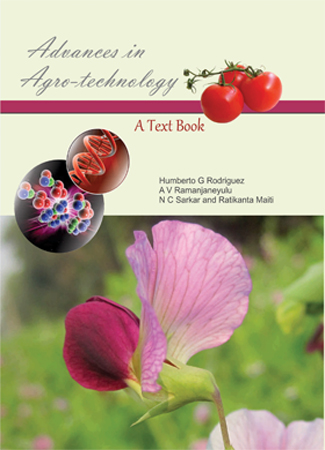
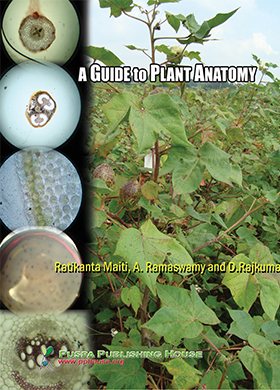
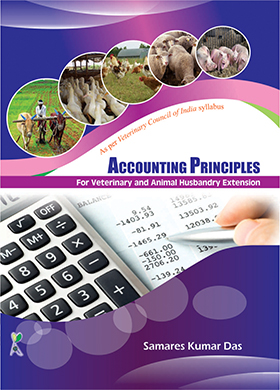
.jpg)
.jpg)


